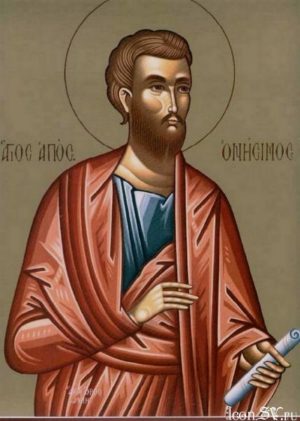Friday was the commemoration of Philemon and Onesimus. You can read Philemon is a few minutes. It is the story of a runaway slave and his owner and Paul’s intercession between the two and wanting them to be friends and brothers. The beauty of that little letter is Paul modeling or taking on the role of Christ and showing in an action – paying Onesimus’ debt and breaking down the dividing wall of hostility and slavery between them. Paul throughout his ministry repeats that Christ is all in all, for him live is Christ, all things find their purpose in Christ, that Christ is the image of the invisible God and that Christ holds all things together. He says it enough that we should take it seriously but it is always interesting to hear others pick it up. This from an author named Ben Witherington III.
For Paul, Christ is the central and most crucial character in the human drama, and everything Paul says about all other aspects of the Story is colored and affected by this conviction. This becomes obvious even in unexpected ways and places. For instance, 1 Cor. 10:4 reveals not only that Paul reads the story of Israel in the light of his Christian faith but also that he believes Christ was already part of that story even during the Exodus-Sinai events. Indeed, Paul believes the one he calls Christ was already present and active before the human story began, even
active in the creation of the universe (cf. 1 Cor. 8:6; Col. 1:15-17). In Paul’s view, one is always in danger of saying too little about Jesus Christ, not too much.” Paul’s Narrative Thought World: The Tapestry of Tragedy and Triumph (Louisville, KY: Westminster/John Knox Press, 1994).
I get chewed out often for stating the obvious. The author should be applauded for doing the same. In a world of sin that desperately wants to ignore or downplay the Christ event, or turn Jesus into a moral instructor and coach this is refreshing even if it is old.


